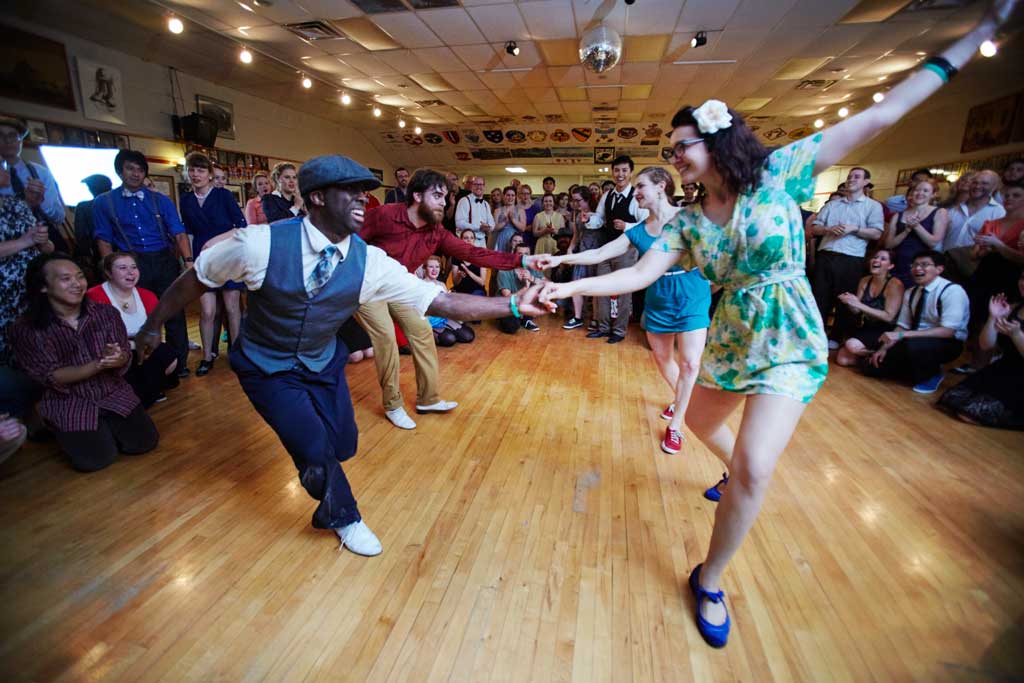
While social media and the internet may create communities behind the screen, some people find that encounters on the dance floor are more satisfying than those restricted to cyberspace.
Across the state, dance classes have risen in popularity, and Gina Bradford of Tulsa’s Vintage Swing Movement says this increase in enrollment reflects a remedy for disconnection from one-on-one interactions. She narrows that focus to participants under 30.
“They are looking for ways to connect with others,” she says. “We find that people really want to get back to those encounters that swing dance is great at facilitating.”
Vintage Swing Movement (VSM) partners with The Oklahoma Swing Syndicate (TOSS) to encourage and educate individuals with an interest in swing dancing. TOSS coordinates dances and lessons from 6:30 to 10 p.m. Saturdays at the Southminster Presbyterian Church Community Center, 3500 S. Peoria Ave. VSM founded dance chapters at the University of Tulsa and Tulsa Community College, and these organizations have combined dances Thursday nights during the academic year. VSM and TOSS also host an annual, nationwide event in which dancers come to Tulsa for a weekend of workshops and lessons.
Bradford defines her swing dance organization as a movement because she understands that dance has the ability to change culture. Having grown up with an awareness of the Tulsa Race Riot, Bradford says one of her goals is to connect individuals of different socioeconomic, linguistic and racial backgrounds.
“We want to help Tulsa create a new image where we do our part as [representatives of] swing dance to find greater unity,” she says.
Swing dances were heavily influenced by jazz, and the form began to develop during the 1920s when racial segregation was prevalent. Because dance expresses universal emotions, it can unite communities where cultural tensions exist.
“Although we cannot have answers to all of the ills of the past or the challenges we deal with today, we know that swing has that same power today,” Bradford says.
Connecting with other people through social media may have some value, but the recent rise in popularity of dances like the Lindy Hop, which requires partners to hop, step, kick, spin and keep time together, reveals a deficit in physical interaction among millennials. Such connections can be found in dance halls or classes.
Classes are taught in a variety of locations across Tulsa. The First United Methodist Church Youth and Family Center at 10 E. 11th St. hosts classes on Progressive Lindy Hop from 7:30 to 8:30 p.m. Tuesdays. Chimera, a popular downtown coffee house, holds swing dances at 7 p.m. Tuesdays. On second Fridays from April through October, classes for beginners and experienced dancers take place on the Guthrie Green from 6:30 to 9 p.m.





















